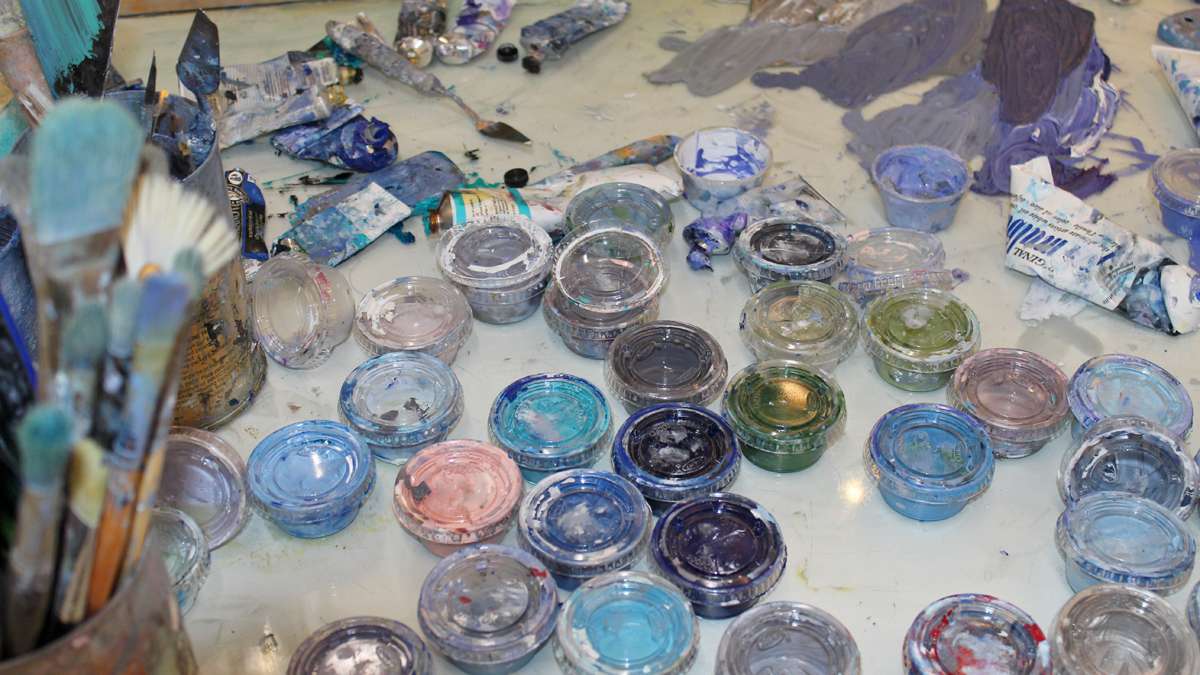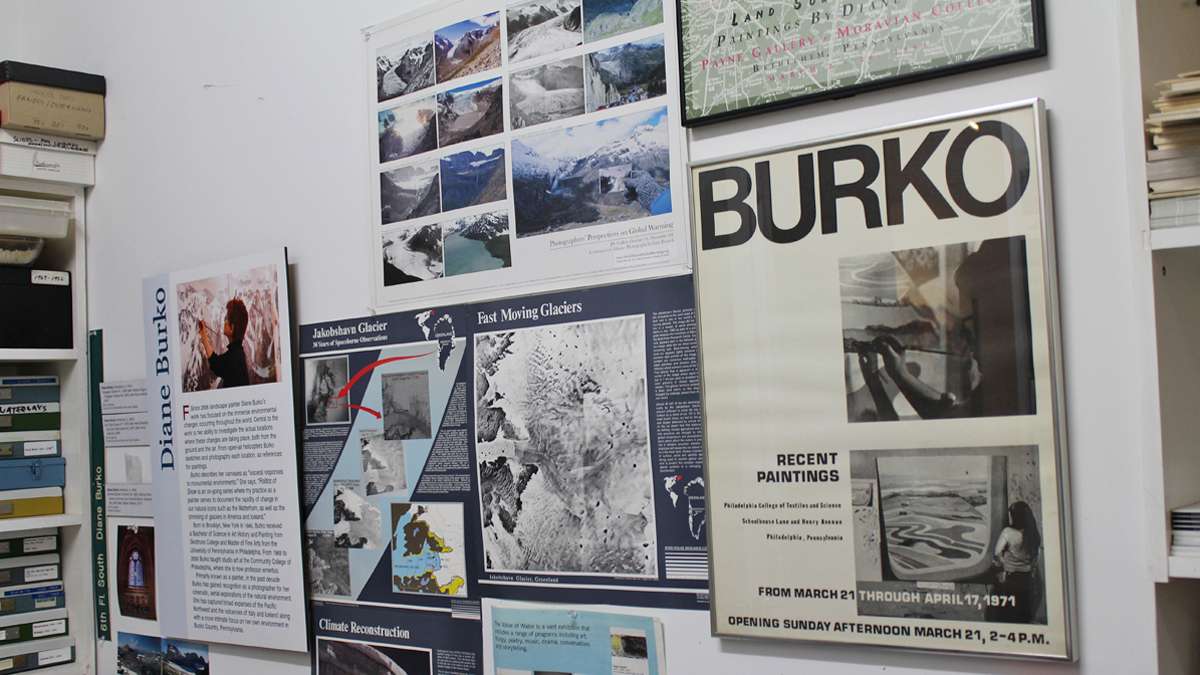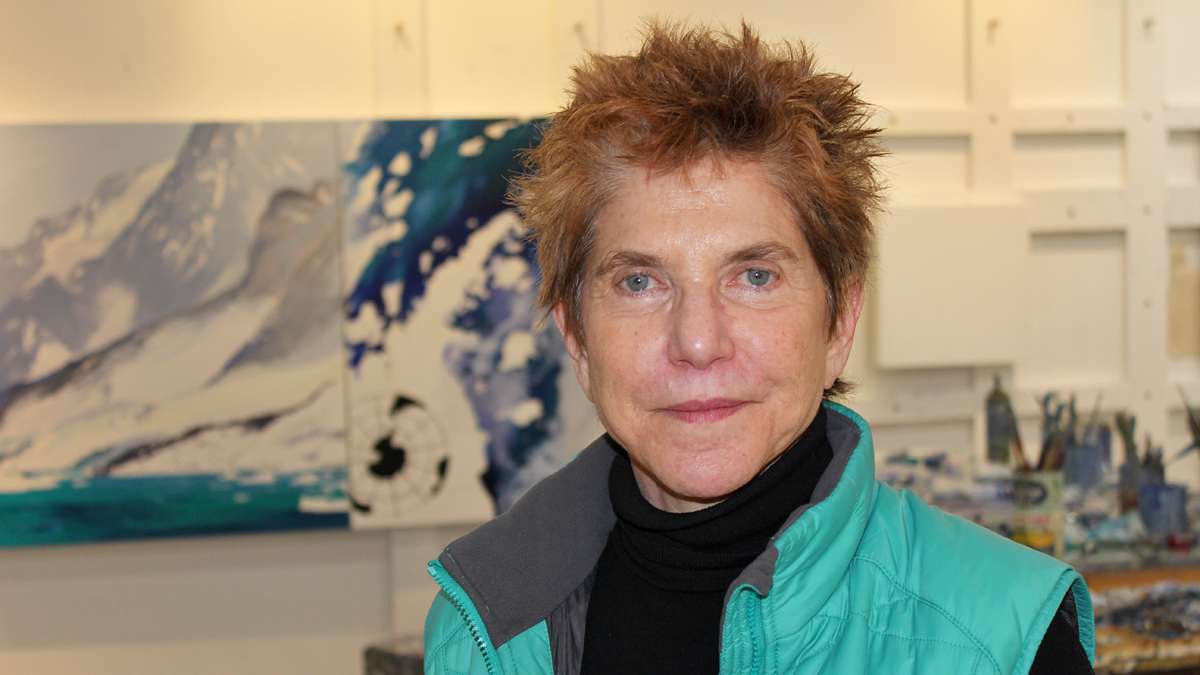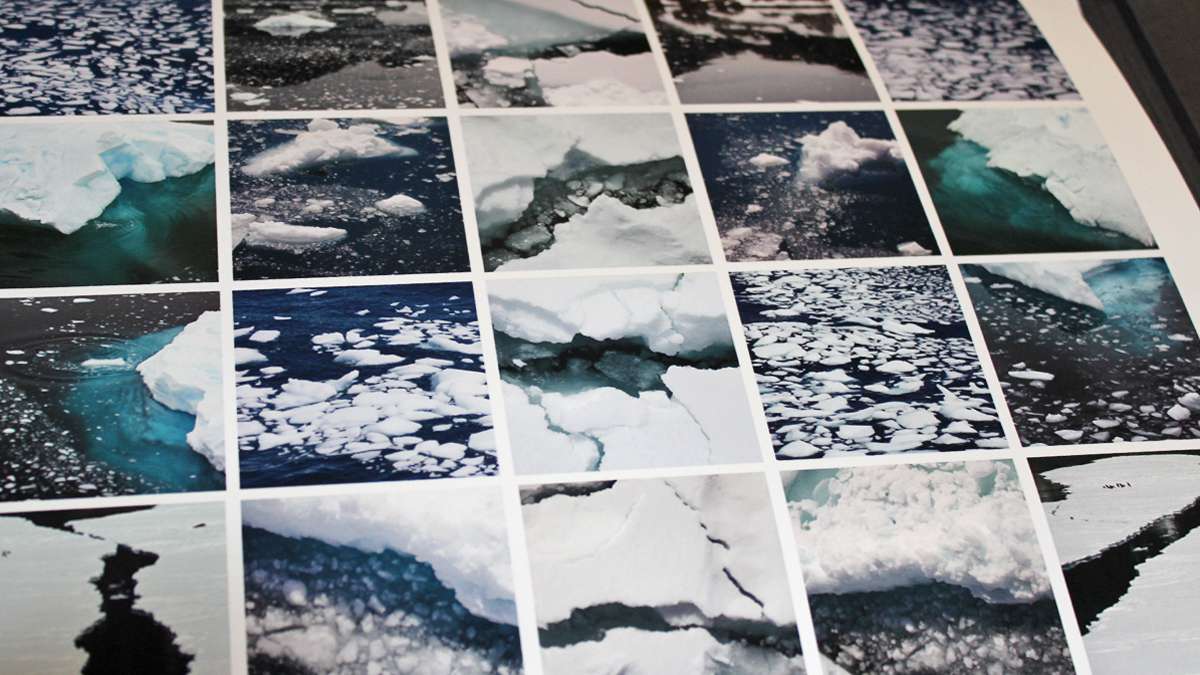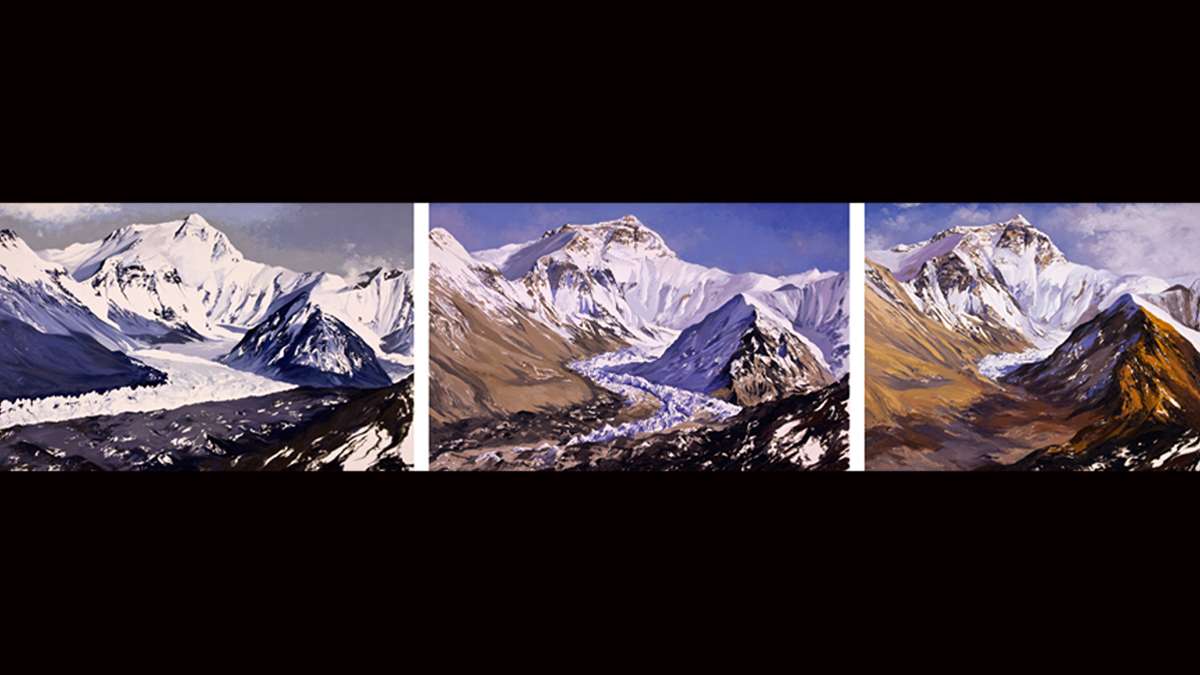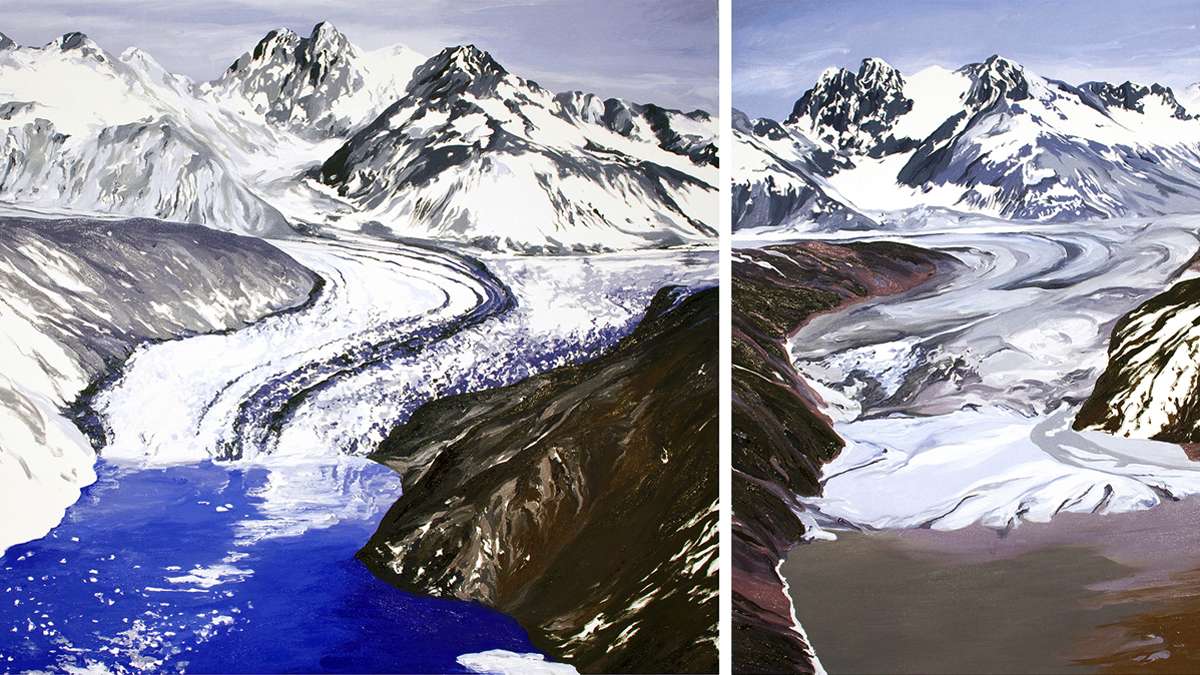Documenting climate change through art
ListenArtist and photographer Diane Burko uses art to depict what scientists struggle to explain about climate change.
Artist and photographer Diane Burko is not interested in painting quiet pretty landscapes; her canvases are about melting glaciers, eroded mountain ranges and large fragments of ice floating in chaotic waters. She is interested in showing the forces that are shaping change in nature and to do so, she works closely with scientists who are documenting and measuring our planet’s environmental transformations.
Along the walls of Burko’s ample studio in Center City, Philadelphia, there are half a dozen paintings in progress. Her work table has a rich palette of white, green and blue paints. All flat surfaces are filled with topographic charts, official aerial photos, fat volumes of statistical studies from NASA and U.S. Geological Surveys and lots of maps.
This is clearly a place where art and science live together and inform each other. She describes the painting she is working on.
“It’s a diptych. On one side is a map of Antarctica with a landscape based on photos I took on a recent trip to Antarctica,” explains Burko, “and on the right is a graph about how ice melts in different parts of the world, there are no dates or numbers. It’s just an implication, just a graphic thing and there’s also color lines.”
A marriage of art and science
Creating a visual language that conveys geological research is a goal shared by scientists like Rutgers University researcher and geography professor Asa Rennermalm, who invited Burko to show her work and to lecture about her experiences at the Zimmerli Museum on campus.
“Burko has another way of conveying environmental change than I do,” says Rennermalm, a hydrologist specializing in Arctic climate change. “I measure things, I model things and summarize things in figures and tables and scientific papers and in conference presentations. Diane does it by making paintings or photography and for most people, that makes it more accessible and that creates an interest and curiosity among people to learn more.”
Rennermalm, who specializes in climate change, sees Burko as a scribe of sorts crafting an archive of things on the way to being lost .
“In a way it’s a bit sad to see that some landscapes are gone for the rest of my lifetime and so it’s beautiful to see that it’s captured by her art,” she says. “It provides a record of something that was here and now it’s gone”.
Flying over the Arctic
But photos alone don’t do the trick. They provide a basis for most of Burko’s “before and after” imagery.
To feed her artistry, Burko goes on location, to Alaska to look at shifting glaciers, to Hawaii to fly over an erupting volcano, to Scandinavia to look at receding fjords.
In 2013 Burko spent her time commuting, so to speak, between the two Poles. And as she has done for decades, she teams up with groups of scientists who are deeply immersed in measuring climate change.
“What was fascinating,” says Burko, “is to walk in these places and literally plant my camera in the ice and observe how the landscape has transformed. It takes millions of years for glaciers to form, but these glaciers just keep receding, there’s nothing left. Out of 150 glaciers that used to be in Glacier National Park I think there are only 35; the rest are glacier lakes. That’s pretty astounding.”
Burko says that trip to the national park was a turning point for her.
“With all that new information and facts, I just got charged. I feel there’s no going back, there’s no other way I could make a beautiful painting that didn’t have another purpose and exchanging ideas with and collaborating with glacial geologists throughout the world. It’s a much richer life that I have and I feel I’m making a difference, people tell me I’m making a difference.”
So much so, that Burko is now an invited member of the University of Colorado’s Institute of Arctic and Alpine Research.
Sensing change
Visualizing ecological transformations is at the core of the exhibition “Sensing Change” at The Chemical Heritage Foundation in Philadelphia. The show, which runs until May 2, features Burko’s work along with that of other artists who want to interpret and translate serious research on climate change through their art . Christy Schneider curated the exhibition. She says Burko uses data as a point of departure, but her art transforms it into a gateway to scientific insight.
“That idea,” says Schneider, is reflected in one of Burko’s paintings. “I’m thinking of a painting in which she has the lines of a glacier receding, and she uses red, purples and a pinkish color and a yellow. Her color choices tell you increasing danger, like going from a yellow light to a red light. And that knowledge she brings as an artist is color and what it means.”
Burko says she’s always been attracted by monumental landscapes.
“I’m a girl from Brooklyn, so I don’t want to paint asphalt, I want to look at these incredible awe inspiring spaces and I sort came to that, I wanted to be taken by surprise by that, I’m sort of like a discoverer.”
WHYY is your source for fact-based, in-depth journalism and information. As a nonprofit organization, we rely on financial support from readers like you. Please give today.



